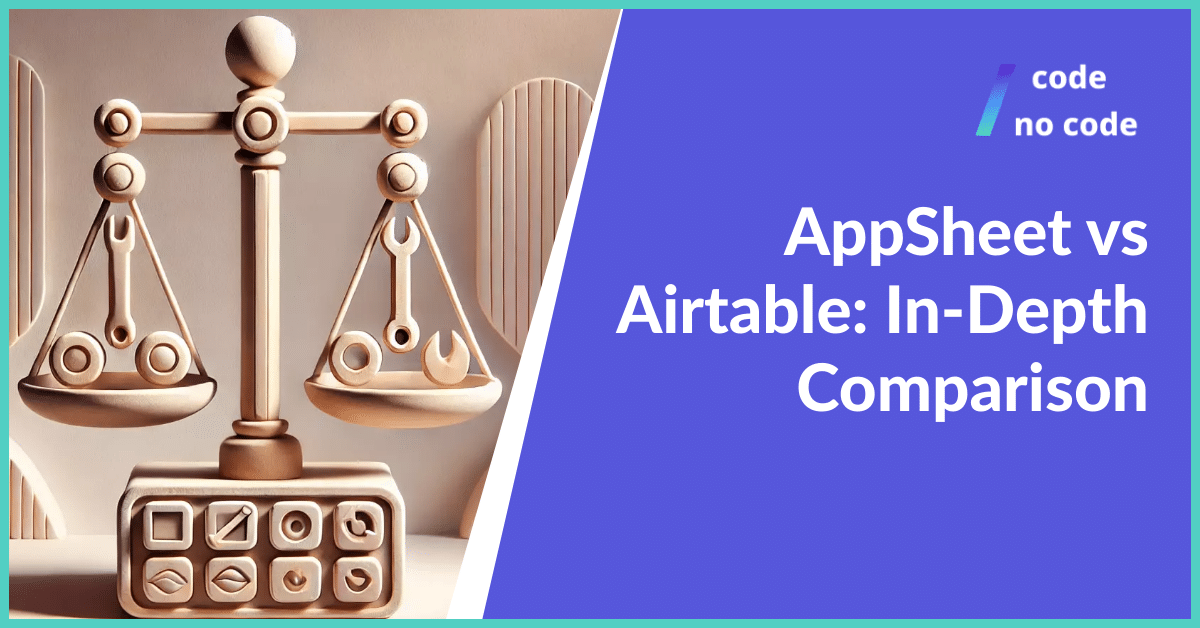
AppSheet vs Airtable: In-Depth Comparison
If you’re deciding between AppSheet and Airtable, knowing their differences is important. Both tools are designed to build apps and manage data without coding. This guide will...
Although we are yet to see flawless Artificial Intelligence tech, it has surely shown significant growth and innovation in the past decade. According to a study [2] by Forbes, 83% of executives believe AI is a strategic priority for their businesses today, while 75% of executives say that AI will allow them to move into new businesses and ventures. Since AI is so important for businesses across industries, it is only natural that No Code AI platforms should exist and empower everyone to experiment with the technology. AI that we can build without code might seem impossible right now but once you read this entire blog, you will believe otherwise. In this guide, we have covered all you need to know about developments within No Code artificial intelligence and how they democratize AI for all.

“Success in creating AI could be the biggest event in the history of our civilization”
Stephen Hawkins[1]
With different tool types that make technology accessible for all available, such as SaaS, No Code, and Low Code, it is important to know where exactly No Code AI falls and what does it mean.
Any tool or platform that lets anyone (regardless of their technical background) perform a task or solve a problem with Artificial Intelligence (and build AI models) falls under No Code AI. This is as simple as we can define No Code AI platforms.
As a business person, you can use these tools to validate your AI-based ideas at an initial level without going crazy with your budget.
It is a myth that No Code AI and No Code tools, however, are just for non-technical people. These tools are the most useful for these people indeed, but AI, data or coding experts can use them to streamline their workflow and automate mundane tasks too.
Apart from bragging rights on how your business is using AI models, here are some benefits of using No Code AI:
Low cost – It is a myth that Low Code and No Code platforms and especially AI platforms are expensive. We have written an in-depth article on the price of No Code tools.
If you are planning to scale your business, your company would need fewer AI developers. This way you can save costs and the efforts of your HR team.
Scalability – No Code AI platforms are made with scalability in mind. These platforms can manage the load of thousands of users and handle multiple requests at a time. This comes in handy when you are planning to scale your business.
No human error – Unlike humans, AI can work 24 hours a day without making a single functioning error. This helps you save a lot of time.
If you were to compare building a model to analyze all your customer chats and having a data scientist feed the data to AI, the latter would definitely win. You can run the model for 3 days straight, get your work done faster and with more accuracy.
Don’t confuse No Code AI with AutoML. Let’s understand the difference between these two terms.
No Code AI is focused on creating AI models without code, meant for non-technical users. The target market of these tools is professionals who don’t want to create an AI solution with code because they either do not have the technical skills themselves, have no access to a team of developers or just want to get their solution faster.
AutoML works as a supporting function by providing automation through machine learning and AI. These tools are often used by data scientists and AI developers to automate their workflows and save a significant amount of time.
Apple recently launched a No Code AI platform called Trinity to organize and structure Complex Spatial datasets. It created a solution for a niche market. Thanks to the code-free characteristics, the barrier to entry is almost gone. Using AI, experts from any domain can start experimenting with their data.
Obviously AI received funding of $4.7M in 2021. The platform lets you create machine learning models without code.
The founder said, “Obviously AI’s niche is mid-market businesses that don’t have a data science team, or have people who know data analytics but are not programmers.” We will talk about Obviously AI in a bit more detail in the next section.[3]
We have curated a list of No Code AI solutions. Now, keeping in mind that we can’t cover every tool out there, we have some popular tools and some with different and interesting use cases.
If you want to build an app around image recognition and classification, Lobe, one of the most interesting AI solutions out there, makes machine learning easy for you.
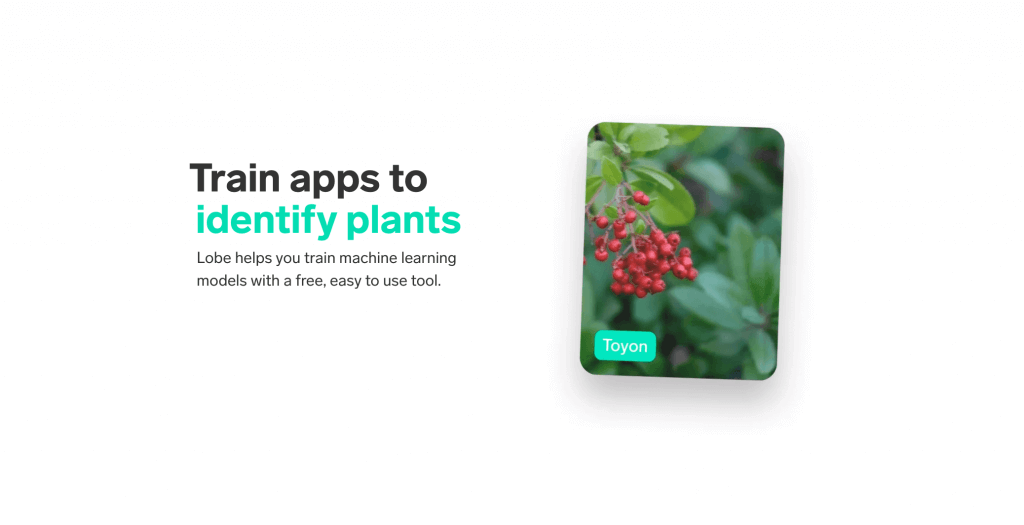
You can train your apps with custom machine learning models. Currently, it only allows the users to classify images and build a model that identifies images.
But soon they are planning to launch additional features like object detection and data classification. You can run your model offline on your computer until you feel it is ready.
Once you have uploaded enough data sets and trained your model for accuracy, you can deploy it with your app.
Use case – Let’s say you want to build an app for farmers assisting them with their crops. You can build an image classification model that understands different phases of leaves and suggests vital steps to follow.
Obviously AI is a No Code development platform for AI projects and building machine learning models with complex data sets and conducting business forecasts. It enables users to input datasets with 150k rows, train custom models and derive data for future predictions.
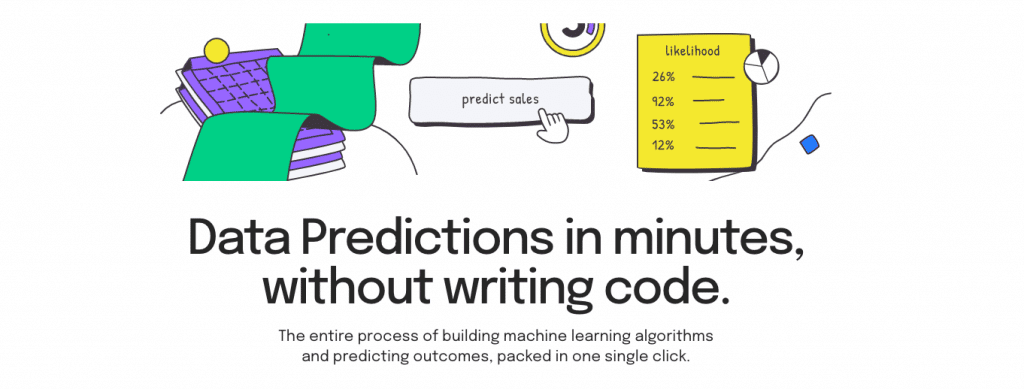
Use case – If you are a SaaS company that wants to predict churn rate with different scenarios, you can put in your data of current churn rate with demographics and average usage time in your model and deploy AI for analysis.
The AI will run tests with your data to find patterns and give you suggestions on your target audience. If a particular demographic has a pattern to churn within a week, you will be able to focus your services on that demographic.
This one is a data science tool that specializes in Shopify conversion rate optimization.
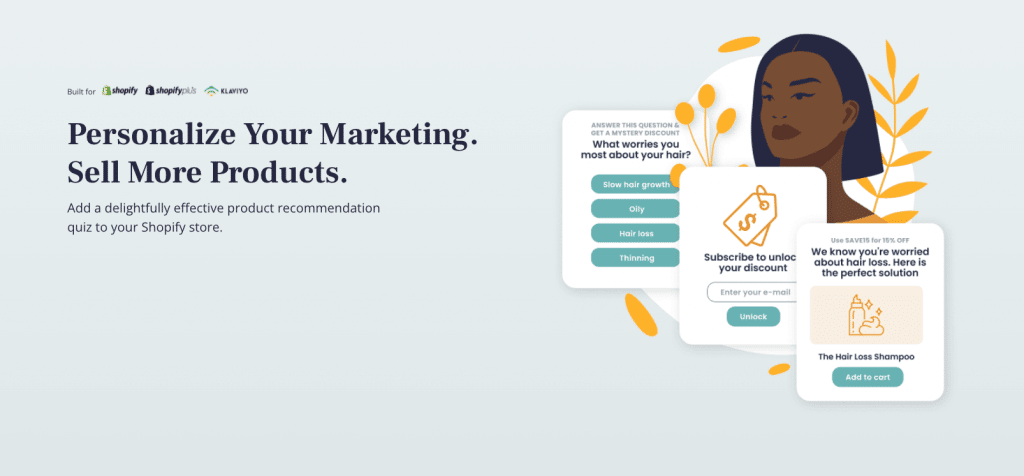
They leverage a first-party data source (Data that your customer directly gives to you rather than you taking it from a third party like Google, Facebook, or Twitter).
You can engage your website visitors with personalized pop-ups and shop quizzes, without a single line of code. These will optimize your customer experience at every stage of the buyer’s journey.
You can leverage their data for targeting ads across marketing channels and build loyalty by suggesting the exact products that they need.
Use case – Let’s say you are a clothing brand. You can design a short visual pop quiz with Octane. Once your visitors start filling in data, they will get AI-based personalized recommendations according to their taste.
This can be done easily and with very little prior training. In addition to that, the model asks these questions to the people interested and not an actual person within your company, means that the whole operation is automatically scaled to your actual customer base.
Just ensure that you inform users about the preference engine before you collect their data. This would help you break through any trust issues your users might have.
MonkeyLearn is a text analysis platform that gives you visual reports on sentiments, intent, and keywords for your business.
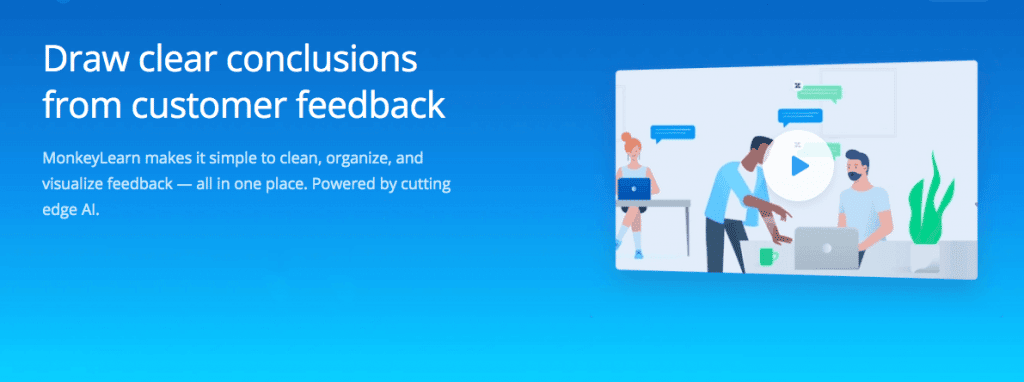
It simplifies the process of document classification from unstructured text data and data extraction. It can be easily integrated with Zendesk and almost all Google products. You can check out their blog if you need help with text classification in the context of AI.
Use case – You are running a successful SaaS product. You have a chatbot that collects text conversations with your customers.
Upload this text data to Monkey Learn and automate business tags, it will generate prediction reports for you. You will find out what kind of conversations are more likely to convert your users.
Accern is a use-case specific No Code AI platform. You can choose from their use case library and build an AI model within minutes.
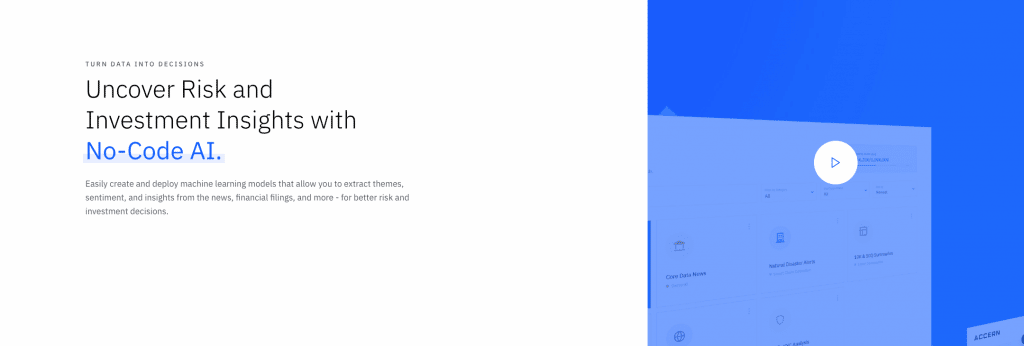
Find out if any of your business problems align with one of the use cases in their resource library. Register with the app and start building the product. The use cases might limit the independence of a user but if you find the exact use case, you do not have to look anywhere else.
The AI models built by the creators of the tool can help business users use case specific data without writing code, which is exactly what No Code platforms are meant for. When you get enough skills and practice with Accern, you can move on to a more flexible platform that can build totally custom models.
Use case – Filter content by sentiment. If you want to automatically filter content and conversations according to the positive and negative sentiments of a buyer, you can do it with Accern’s intelligent filtering.
We have come to the end of our No Code AI guide. The industry is gaining momentum is only going to see innovations and upgrades in the coming decade.
Amazon, for example, quite recently launched their own No Code AI tools: SageMaker and SageMaker Canvas. The tools allow building custom ML models for users with little technical expertise. You can read more in our article about the Launch of SageMaker Canvas.
Do you think we should add any tools or platforms to the list? Let us know in the comments or on our social media. We will try to add your favorite tools in the next update!
For more information on No Code in general, its uses in other business spheres and its future, read our article on What is No Code.